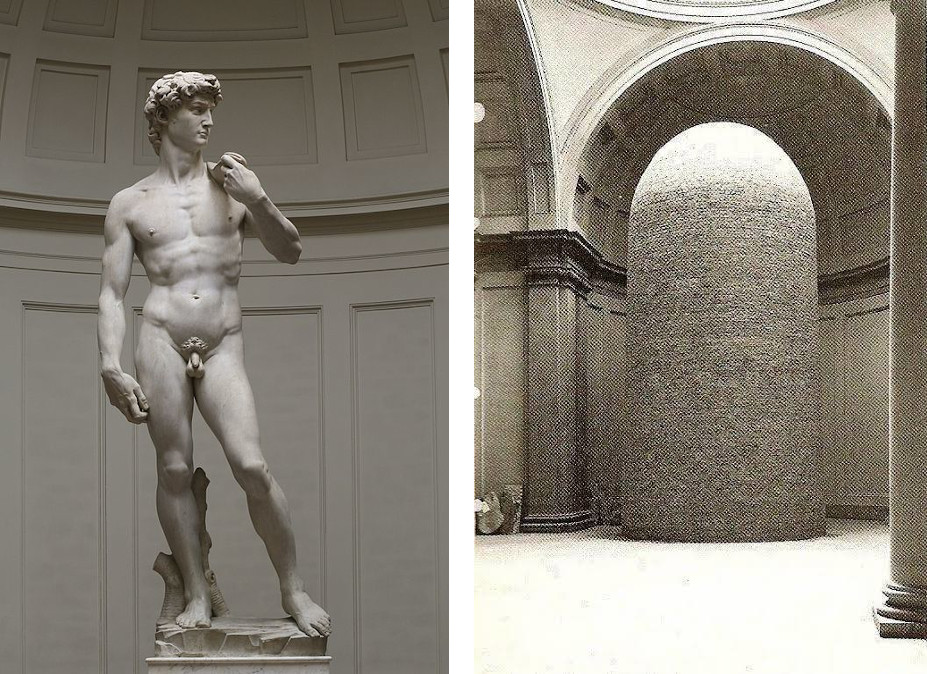
This image turned up in the subreddit Confusing Perspectives back in February.
One user wrote, “Someone needs to make this into real sheet music and see how it sounds. I’m curious now.”
Another version:
https://www.youtube.com/watch?v=MT5erpy3kOA

This image turned up in the subreddit Confusing Perspectives back in February.
One user wrote, “Someone needs to make this into real sheet music and see how it sounds. I’m curious now.”
Another version:
https://www.youtube.com/watch?v=MT5erpy3kOA
In 2013, University of Minnesota geography student Daniel Crawford composed “A Song of Our Warming Planet,” a solo cello piece built on climate data. The pitch of each note corresponds to the average annual surface temperature of a year in the range 1880-2012 in data from NASA’s Goddard Institute of Space Studies; each ascending halftone represents roughly 0.03°C in planetary warming.
“Climate scientists have a standard toolbox to communicate their data,” Crawford said. “We’re trying to add another tool to that toolbox, another way to communicate these ideas to people who might get more out of music than maps, graphs, and numbers.”
Below: He later applied the same method to create a string quartet using data from 1880 to 2014. The four parts reflect the average annual temperatures in four regions: the cello the equatorial zone, the viola the mid-latitudes, and the violins the high latitudes and the arctic.
In 2014, Italian artist Sven Sachsalber set out literally to find a needle in a haystack.
The performance, undertaken at the Palais de Tokyo in Paris, was allotted two days. Amazingly, Sachsalber found the needle with a few hours to spare.
Now we need a new saying.
Inspired by his wife’s art studies, physicist David C. Roy turned his training to sculpture and began fashioning moving mechanisms of birch, not clocks themselves but clocklike in that they’re wound by hand and then run unpowered, sustaining their motion through escapements, suspended weights, and constant force springs.
“I saw it as another type of creative problem solving, not all that different from my advanced physics courses, but with a completely different goal,” he writes. “To this day, I find art and science to be closely linked.”
More on his website and YouTube channel.
French painter Joseph Ducreux (1735–1802) was fascinated with physiognomy, the notion that a person’s character is reflected in their outward appearance — and this led to some decidedly unconventional self-portraits.
At the same time, Franz Xaver Messerschmidt (1736-1783) was doing similar work in three dimensions.

By 1914 Frank Lloyd Wright had become one of America’s most influential architects. But that August a violent tragedy unfolded at his Midwestern residence and studio. In this week’s episode of the Futility Closet podcast we’ll describe the shocking attack of Julian Carlton, which has been called “the most horrific single act of mass murder in Wisconsin history.”
We’ll also admire some helpful dogs and puzzle over some freezing heat.
https://www.youtube.com/watch?v=mDXuk9xo8hQ
Brazilian pianist João Carlos Martins won worldwide acclaim but had to retire in March 2019 after 24 surgeries could not relieve the pain caused by a degenerative disease and a series of accidents.
But designer Ubiratã Bizarro Costa proposed making some neoprene-covered bionic gloves that lift Martins’ fingers after they depress the keys, and by December they had perfected them.
“I might not recover the speed of the past,” Martins told the Associated Press. “I don’t know what result I will get. I’m starting over as though I were an 8-year-old learning.”
But his goal now is to play an entire Bach concert perfectly. “It could take one, two years. I will keep pushing until that happens. I won’t give up.”
Crop artist Stan Herd plants, mows, and plows land to create large-scale images visible from the air.
“All over the world farmers draw with the plough, harrow, and harvesting combine, and paint with the colors of their crops,” he says. He applies the same techniques to create portraits, still lifes, and (somewhat recursively) landscapes.

Arborsculptor Richard Reames created this living bench by training red alders into a congenial shape.
His monograph on tree trunk topiary is called How to Grow a Chair.

See A Natural Seat.

In January 1943, a brick “hive” was built around Michelangelo’s David to protect it from incendiary bombs.
Two and a half years later, preservationist Deane Keller wrote to his wife, “The bright spot yesterday was seeing Michelangelo’s David at length divested of its air raid protection. It was dusty and dirty but it was a great thrill.”
(From Ilaria Dagnini Brey, The Venus Fixers, 2010.)